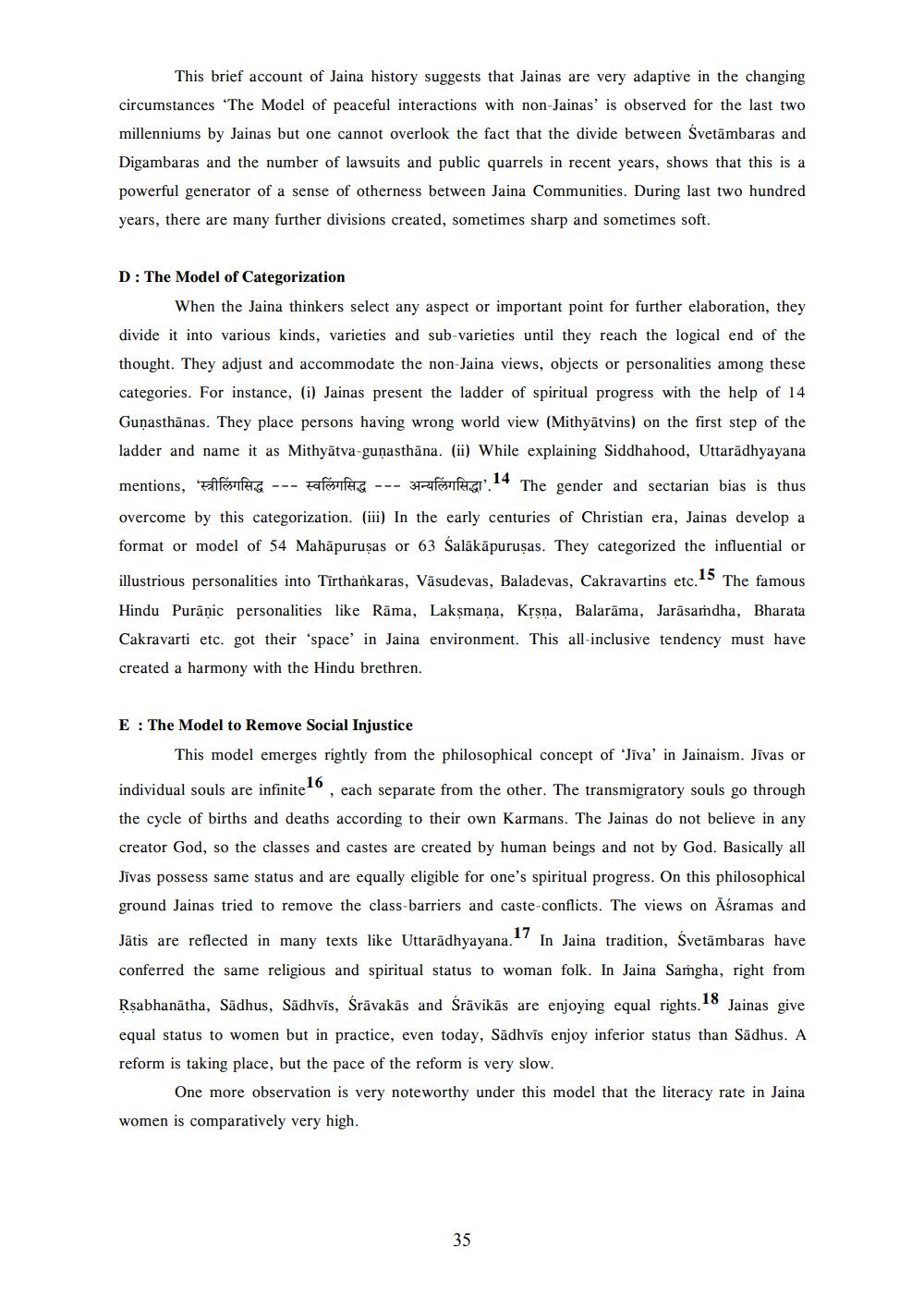________________
This brief account of Jaina history suggests that Jainas are very adaptive in the changing circumstances 'The Model of peaceful interactions with non-Jainas' is observed for the last two millenniums by Jainas but one cannot overlook the fact that the divide between Svetāmbaras and Digambaras and the number of lawsuits and public quarrels in recent years, shows that this is a powerful generator of a sense of otherness between Jaina Communities. During last two hundred years, there are many further divisions created, sometimes sharp and sometimes soft.
D: The Model of Categorization
When the Jaina thinkers select any aspect or important point for further elaboration, they divide it into various kinds, varieties and sub-varieties until they reach the logical end of the thought. They adjust and accommodate the non-Jaina views, objects or personalities among these categories. For instance, (i) Jainas present the ladder of spiritual progress with the help of 14 Gunasthānas. They place persons having wrong world view (Mithyātvins) on the first step of the ladder and name it as Mithyātva-gunasthāna. (ii) While explaining Siddhahood, Uttarādhyayana mentions, isf --- Raffs --- PRISHTAGI'. 14 The gender and sectarian bias is thus overcome by this categorization. (iii) In the early centuries of Christian era, Jainas develop a format or model of 54 Mahāpurusas or 63 Salākāpurusas. They categorized the influential or
illustrious personalities into Tīrthankaras, Vāsudevas, Baladevas, Cakravartins etc. The famous Hindu Purānic personalities like Rāma, Laksmana, Krsna, Balarāma, Jarāsaṁdha, Bharata Cakravarti etc. got their 'space in Jaina environment. This all-inclusive tendency must have created a harmony with the Hindu brethren.
E : The Model to Remove Social Injustice
This model emerges rightly from the philosophical concept of 'Jiva' in Jainaism. Jīvas or
individual souls are infinite , each separate from the other. The transmigratory souls go through the cycle of births and deaths according to their own Karmans. The Jainas do not believe in any creator God, so the classes and castes are created by human beings and not by God. Basically all Jīvas possess same status and are equally eligible for one's spiritual progress. On this philosophical ground Jainas tried to remove the class-barriers and caste-conflicts. The views on Aśramas and
Jātis are reflected in many texts like Uttarādhyayana." In Jaina tradition, Svetāmbaras have conferred the same religious and spiritual status to woman folk. In Jaina Samgha, right from
Rsabhanātha, Sädhus, Sādhvīs, Srāvakās and Srāvikās are enjoying equal rights. 18 Jainas give equal status to women but in practice, even today, Sādhvis enjoy inferior status than Sädhus. A reform is taking place, but the pace of the reform is very slow.
One more observation is very noteworthy under this model that the literacy rate in Jaina women is comparatively very high.




